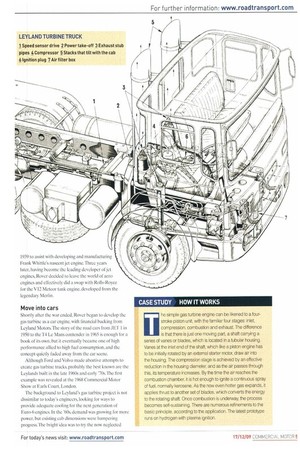CASE STUDY HOW IT WORKS
Page 57

If you've noticed an error in this article please click here to report it so we can fix it.
he simple gas turbine engine can be likened to a four stroke piston unit, with the familiar four stages: inlet, compression, combustion and exhaust. The difference
is that there is just one moving part, a shaft carrying a series of vanes or blades, which is located in a tubular housing. Vanes at the inlet end of the shaft. which like a piston engine has to be initially rotated by an external starter motor, draw air into the housing. The compression stage is achieved by an effective reduction in the housing diameter, and as the air passes through this, its temperature increases. By the time the air reaches the combustion chamber, it is hot enough to ignite a continuous spray of fuel, normally kerosene. As the now even hotter gas expands, it applies thrust to another set of blades, which converts the energy to the rotating shaft. Once combustion is underway, the process becomes self-sustaining. There are numerous refinements to the basic principle, according to the application. The latest prototype runs on hydrogen with plasma ignition.
























































































































































